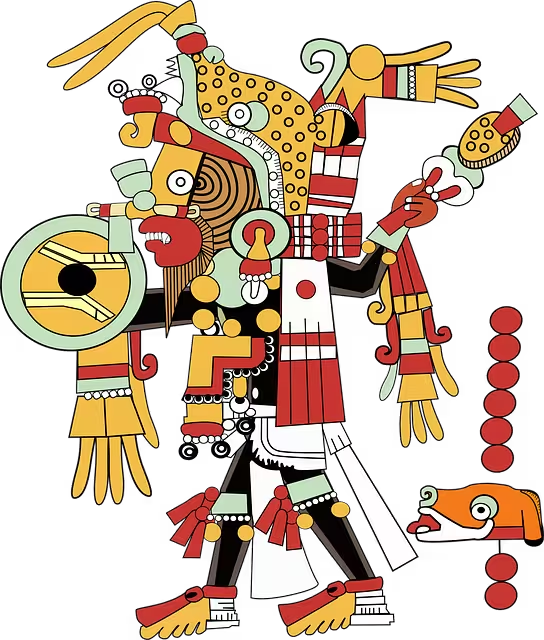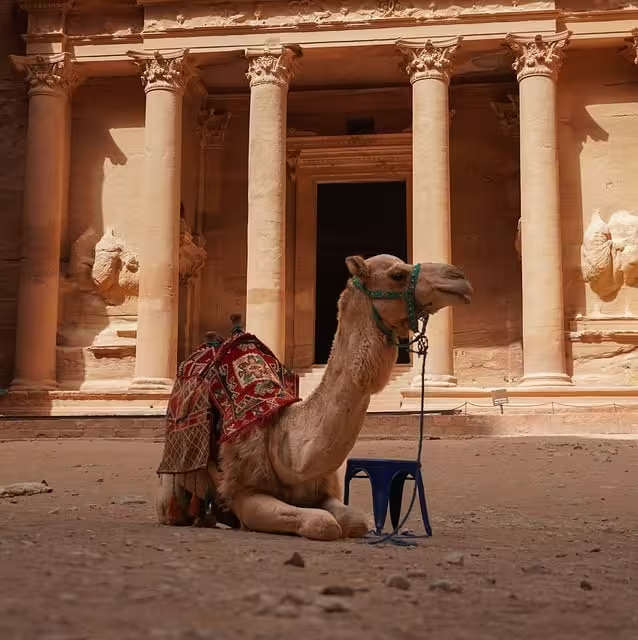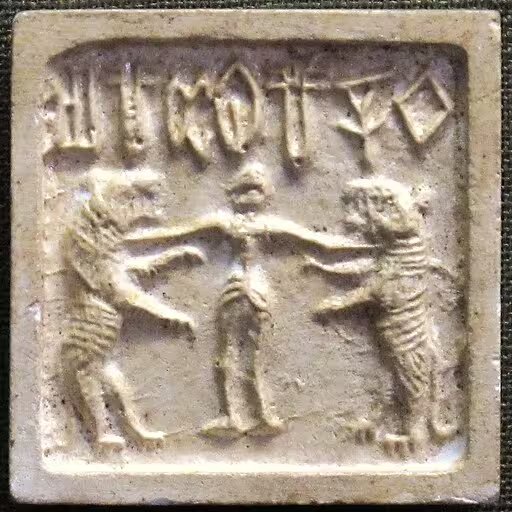In our modern world, we often look to complex technology and future innovations to solve our growing environmental problems.1 We design carbon capture machines and develop sophisticated climate models, racing against a clock of our own making. But what if the most effective solutions are not hidden in the future, but are waiting to be rediscovered from our distant past? What if the key to a sustainable tomorrow lies in the profound, time tested lessons from ancient civilizations on nature conservation?
This is not a call to abandon progress, but to enrich it with a wisdom that has been forgotten. By examining the intricate and successful strategies of ancient cultures, from the elegant water systems of Petra to the breathtaking agricultural terraces of the Inca, we can uncover a blueprint for resilience. We can learn how to build societies that do not just survive within nature, but thrive as a part of it. The story of these ancient peoples is a powerful reminder that for most of human history, sustainability was not a choice, but a fundamental condition for existence.
Table of Contents
A Different Paradigm: How Ancient Cultures Viewed the Environment
To understand the conservation practices of an ancient civilization, we must first realize that they did not think about the environment in the same way we do. For them, there was no clear line where humanity ended and nature began. The modern idea of “conservation” implies saving something that is separate from us. For ancient people, the land, water, and sky were not just resources; they were living parts of their world, woven into their culture, spirituality, and daily survival.
Their goal was not “environmentalism” but symbiosis, a mutually beneficial relationship with their surroundings. An unhealthy forest or a polluted river meant an unhealthy tribe. Their survival depended entirely on the health of their local ecosystem. This deep connection fostered a powerful respect. This was an ancient and fundamental truth that guided their actions.
This respect was often expressed through spiritual beliefs. Many ancient cultures believed in a world filled with spirits.2 Sacred groves were areas of forest believed to be the home of gods or ancestors, making it taboo to cut down trees or hunt within them.3 Mountains were seen as powerful deities, and rivers were revered as life giving goddesses. These beliefs created protected areas more effectively than any modern law or national park fence.
The rules were not written on paper but were etched into the cultural soul of the people. Following them was a matter of spiritual survival as much as physical. This ancient worldview ensured that large tracts of land and critical ecosystems were left untouched for centuries.
Furthermore, ancient societies often operated on a much longer timescale than we do today. Many indigenous cultures hold the concept of “seven generation thinking,” where major decisions are weighed against their potential impact on descendants seven generations into the future.4 This approach is the complete opposite of our modern world’s focus on quarterly profits and immediate results. For an ancient farmer, it was not enough to have a good harvest this year; they had to ensure the soil would remain fertile for their children, grandchildren, and beyond. This long term perspective is perhaps the most critical lesson we can learn from our ancient ancestors.
Case Studies in Sustainable Design: Masters of Resource Management
Looking back at the archaeological record, we find stunning examples of ancient civilizations that engineered their societies in perfect harmony with their environments. They were not primitive; they were masters of sustainable design, creating solutions that were both ingenious and deeply respectful of the natural world. These ancient cultures provide us with a library of proven strategies.
The Inca Empire: Engineering with the Earth

High in the Andes Mountains, one of the world’s most challenging landscapes, the Inca Empire built a civilization of incredible sophistication.5 Their success was based on a deep understanding of their steep, rocky, and unpredictable environment. Their most visible legacy is their mastery of agriculture.
Instead of fighting the mountains, they worked with them. They developed a system of terrace farming, creating step like platforms called andenes that climbed the steep slopes. These were not just simple dirt ledges. The andenes were marvels of engineering.6 Each step had a base layer of large stones for drainage, a middle layer of gravel and sand, and a top layer of rich soil, often carried up from the valleys below.
This design achieved several things at once. It prevented the torrential mountain rains from washing away the precious topsoil. It allowed water to drain slowly through the layers, ensuring the crops received moisture without being waterlogged.7 And amazingly, the stone walls of the terraces absorbed sunlight during the day and radiated it back at night, protecting the plants from the harsh cold and creating stable microclimates.8 This allowed the ancient Inca to grow a wide variety of crops, like potatoes, maize, and quinoa, at altitudes where it would otherwise be impossible.9
Their management of water was just as brilliant. They built thousands of miles of canals and aqueducts, some of which are still in use today. These channels were carefully carved and angled to follow the contours of the land, moving water from mountain springs and rivers to their farms and cities. The Inca understood gravity, pressure, and flow with a precision that allowed them to build a stable food supply for millions of people.
The ancient city of Machu Picchu is a perfect example of their philosophy. It is not built on the mountain; it is a part of it. The structures, fountains, and terraces are all integrated seamlessly into the natural landscape, a testament to an ancient culture that saw no division between their world and the natural one.10
The Nabateans: Harvesting Water from Stone

In the heart of the Jordanian desert, the Nabateans built their stunning capital city, Petra, a place that should not have been able to support a large population.11 The region receives less than six inches of rain a year, and the summer heat is extreme. Yet Petra thrived as a bustling trade hub for centuries.12 Its secret was an almost magical mastery of water.
The Nabateans were an ancient people who understood that in the desert, every single drop of water is precious.13 They became the world’s first great hydraulic engineers, designing a complex system to capture and store the brief but powerful winter flash floods. They carved channels, called conduits, directly into the sandstone cliffs to direct the rushing water. These channels led to hundreds of underground cisterns, huge chambers carved out of the rock where the water could be stored safe from the sun’s evaporating heat.
They also built small dams across the dry riverbeds to slow the floodwaters and allow them to soak into the ground, replenishing the underground aquifers. This system was so efficient that it is estimated they could collect and store nearly 12 million gallons of water. This supply was enough to support a population of 30,000 people, as well as their gardens and livestock, in one of the driest places on earth. The Nabateans show us that even in the harshest environments, clever design and a deep understanding of natural processes can create abundance. Their ancient city, carved from rock and sustained by captured rain, is a powerful lesson in resourcefulness.
Ancient Egypt: Life in Rhythm with the River

The civilization of ancient Egypt is often remembered for its pyramids and pharaohs, but its true foundation was the Nile River. For thousands of years, Egyptian society was built around the river’s predictable, life giving rhythm.14 This was not a relationship of control, but one of deep understanding and adaptation.
Every year, from June to September, the Nile would flood its banks, fed by monsoon rains far to the south. When the waters receded, they left behind a thick layer of incredibly fertile black silt.15 This natural process renewed the land year after year. The ancient Egyptians based their entire calendar and way of life on this cycle.16 They divided their year into three seasons: Akhet, the season of inundation or flooding; Peret, the season of growing and planting in the newly enriched soil; and Shemu, the season of harvest and drought.
Their entire agricultural system was designed to work in harmony with this flood. They developed a system of basin irrigation, where they would build earthen walls around their fields. During the flood, the basins would fill with water and silt. The water would soak into the ground for over a month, and once the flood receded, the farmers would have perfectly prepared and watered fields ready for planting.
This ancient system was so effective and sustainable that it supported a large and prosperous civilization for millennia without depleting the soil or requiring artificial fertilizers. The great lesson from ancient Egypt is the power of observation and alignment. They did not need to conquer nature; they succeeded by listening to it and dancing to its rhythm.
The Indus Valley Civilization: The First Sustainable Cities?

Over 4,000 years ago, in what is now Pakistan and India, the Indus Valley Civilization built some of the world’s first and most impressive cities, like Mohenjo-Daro and Harappa.17 What is most remarkable about these ancient urban centers is their sophisticated level of planning, particularly regarding water and sanitation.
These cities were laid out on a precise grid system, with streets running north to south and east to west. But beneath the streets lay their greatest achievement: a complex, city wide network of drains and sewers. Nearly every house had its own bathroom and a connection to this underground system. Wastewater was carried away from homes through covered drains that ran along the main streets, preventing the spread of disease and keeping the city clean. These drains led to larger sewers that emptied away from the city.
This shows an incredibly advanced understanding of public health and its link to the environment. At a time when many other cultures had no concept of sanitation, this ancient civilization was building infrastructure that would not be seen again in many parts of the world for thousands of years. They also built numerous wells throughout their cities to provide residents with a clean and reliable source of drinking water.18 The meticulous planning of these ancient cities demonstrates a deep-seated belief in order, hygiene, and community well being, principles that are the foundation of any truly sustainable society.
The Ancient World’s Warning: Lessons from Ecological Collapse
While we can draw inspiration from many ancient successes, history also holds powerful warnings. Not every ancient civilization managed to live in balance with its environment. The stories of those who failed are just as important, as they show what happens when resource extraction outpaces ecological wisdom.
The Roman Empire is perhaps the most complex example. The Romans were brilliant engineers, famous for building massive aqueducts that carried fresh water to their cities and roads that connected their vast empire.19 But this technological prowess came at a high cost. To build their cities, fuel their bathhouses, and smelt the metals for their armies, the Romans engaged in massive deforestation.20 Entire forests across Italy, Spain, and North Africa were clear cut.
The ancient Greek historian Plato, writing centuries before the height of Rome, observed this same problem in his homeland. He described the mountains of Attica, which in his time were stripped bare, and he remembered stories of when they were covered in lush forests. He understood that cutting down the trees led to soil erosion and the drying up of springs.
The Romans also polluted their environment through mining.21 Runoff from lead and silver mines poisoned rivers and land. In many ways, the Roman Empire provides a chilling ancient parallel to our modern world: a society with incredible technological skill but a shortsighted approach to natural resources. Their eventual decline was a complex process, but environmental degradation and the strain it placed on their agricultural systems certainly played a part.
Other examples serve as stark reminders. The Anasazi, or Ancestral Puebloans, of the American Southwest built incredible cliff dwellings and had a sophisticated culture.22 But a combination of prolonged drought and deforestation in their fragile environment likely contributed to the eventual abandonment of their great centers.
The most famous cautionary tale is that of Easter Island, or Rapa Nui.23 It is believed that the ancient inhabitants cut down all of the island’s giant palm trees to build homes, canoes, and, most famously, to transport their massive stone statues, the moai.24 The loss of the forest led to catastrophic soil erosion, the collapse of their ecosystem, and a devastating decline in their population. These ancient failures teach us a critical lesson: no matter how advanced a society is, it is ultimately subject to the laws of nature.
Core Principles for Today: Translating Ancient Knowledge into Modern Action
The stories and strategies of these ancient civilizations are not just interesting historical facts. They contain core principles that are directly applicable to the challenges we face today. By translating this ancient knowledge into a modern context, we can forge a more sustainable path forward.
Principle 1: Work with Nature’s Systems, Not Against Them.
The Inca building terraces and the Egyptians timing their planting with the Nile’s flood show the power of aligning with natural forces.25 Today, this principle is being reborn in movements like regenerative agriculture and permaculture, which focus on building healthy soil and creating farm ecosystems that mimic natural ones. In urban design, it means creating buildings that use passive solar heating and cooling, or designing cities that incorporate green spaces to manage stormwater naturally, just as an ancient floodplain would.
Principle 2: Water is Life’s Limiting Resource.
The Nabateans built a thriving city in the desert by valuing every drop of water.26 In our world, where many regions face growing water scarcity, this ancient lesson is more critical than ever. We can apply it by implementing modern rainwater harvesting systems on our buildings, designing green roofs that absorb and filter rain, and creating urban landscapes that act like sponges instead of funnels. It also means promoting water recycling and conservation in our homes and industries with the same urgency as an ancient desert dweller.
Principle 3: Community is the Steward of the Land.
In many ancient and indigenous cultures, land was not owned by individuals but was managed by the community for the benefit of all.27 This idea of “the commons” fostered a sense of shared responsibility. Today, we see this principle reflected in the rise of community gardens, local food systems, and community land trusts. It is about rebuilding the connection between people and their local environment, empowering them to take care of the places they live. This sense of shared stewardship is essential for long term ecological health.28
Principle 4: Integrate Spirituality and Respect.
For many ancient people, the natural world was sacred.29 This worldview fostered a deep and abiding respect that is often missing in our modern, resource focused perspective. While we cannot simply adopt ancient religions, we can work to cultivate a modern sense of awe and reverence for nature. This means valuing ecosystems not just for the “services” they provide us, but for their intrinsic worth. Fostering this cultural shift through education, art, and personal experience is perhaps the most important ancient lesson of all, because it is the foundation upon which all other sustainable actions are built.
Conclusion: The Future is Ancient
The history of our world is filled with echoes of wisdom. The lessons from our ancient ancestors are clear: sustainability is not a new idea. It is a proven, time tested strategy for human survival. They show us that a society can achieve incredible things, not by conquering the natural world, but by creatively and respectfully integrating with it. Their successes in agriculture, engineering, and urban planning were born from a deep observation of natural patterns and a commitment to generational thinking.
Their failures also provide a stark warning of what happens when that balance is lost. Today, we stand at a crossroads with technology that our ancient predecessors could never have dreamed of. The challenge is to combine our modern innovation with their ancient wisdom. The most sustainable future may be one where our cities function like Nabatean water catchments, our farms are designed like Incan terraces, and our societies operate with the same long term perspective as the creators of the world’s most enduring cultures. The future, it seems, may be very ancient indeed.
